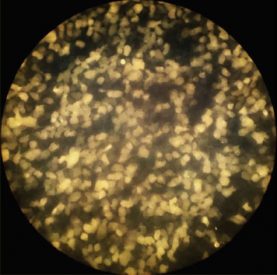Retina and optic nerve diseases, which can cause blindness, are increasing in prevalence due to an aging population. Luckily, a rapidly growing understanding of these ocular disorders are resulting in novel therapeutics and drug delivery systems. This has created a need for improved methods for preclinical drug toxicity screening of ocular drugs.
In a recent issue of Oxidative Medicine and Cellular Longevity, authors Smedowski et. al. describe a drug screening system using rat retinal explant cultures. Before isolating the explants, the retinal ganglion cells were fluorescently labeled with Fluoro-Gold™, a retrograde tracer for neurons, which facilitated quantitative evaluation of the retinal explants. In order to test the system, the explants were exposed to toxic concentrations of gentamicin, which caused retinal cell damage and triggered the rapid release of lactate dehydrogenase (LDH) into the culture medium, and a reduction in retinal ganglion cell density. Moreover, supplementation with ciliary neurotrophic factor (a known neuroprotective agent) was shown to minimize cell damage and reduce the release of LDH.
This system was found to be a fast, reproducible, and sensitive method to detect neurotoxicity in screening studies of retinal drugs; and a viable alternative to screening by in vivo intravitreal drug delivery.

Biotium sells ultra-pure Fluoro-Gold™ (also called Hydroxystilbamidine).
We also offer a wide selection of other fluorescent nerve terminal and neuronal tracers.
Fluoro-Gold is a trademark of Fluorochrome, LLC.

